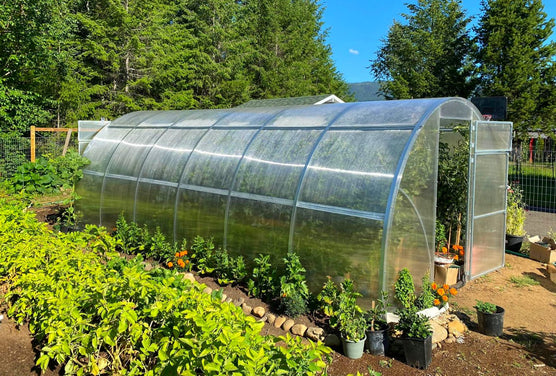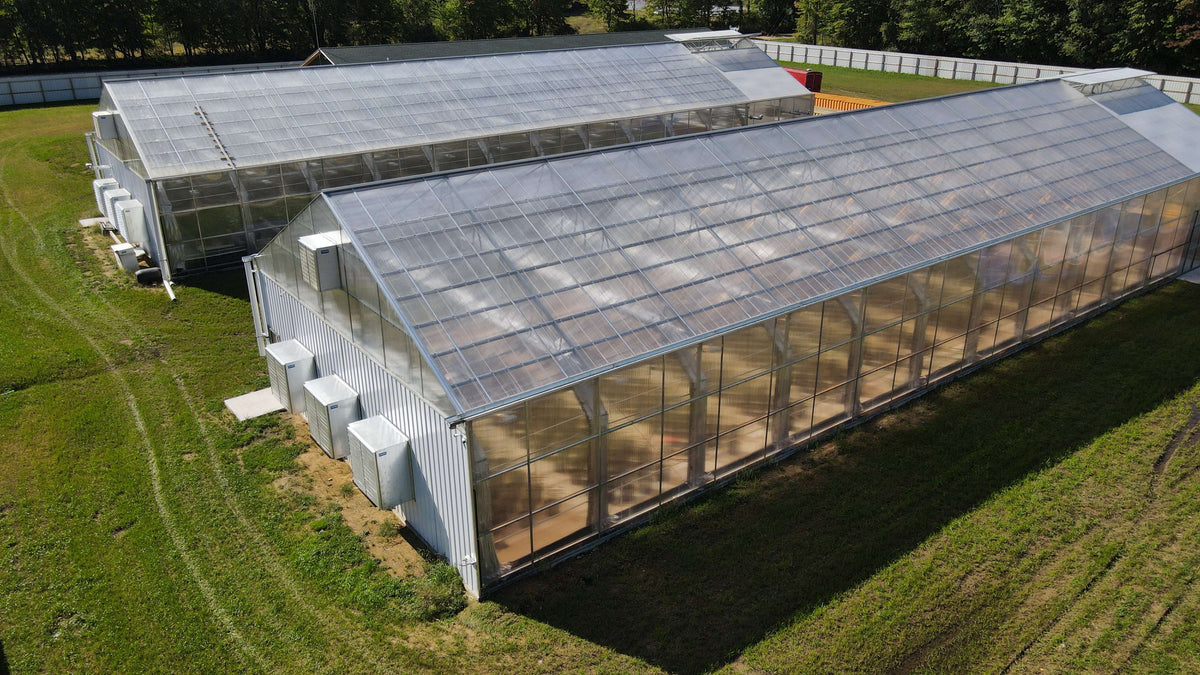Building Dreams, Expanding Environment-friendly: Monarch Greenhouse Builder Utah at Your Solution
Wiki Article
The Future of Greenhouses: Innovations in Lasting Farming
Are you interested concerning the future of greenhouses and how they are changing sustainable farming? Look no more! In this short article, we will certainly discover the amazing innovations that are leading the way for a greener and a lot more efficient farming sector. From advanced climate control systems to vertical farming methods, water-efficient irrigation methods, renewable resource assimilation, and wise information analytics, these developments are transforming the way we expand our food. Prepare to discover the future of lasting agriculture in greenhouses!Advanced Environment Control Equipment
To accomplish ideal growing problems, you can depend on the improvements in greenhouses with advanced climate control systems. These systems have reinvented the method we cultivate plants, giving a regulated atmosphere that contributes to plant growth. With these innovative systems, you can currently manipulate temperature, moisture, light degrees, and also CO2 concentrations to create the best problems for your plants to flourish.Among the vital attributes of these sophisticated climate control systems is their capacity to control temperature level. By using sensing units and automated controls, the greenhouse can change the temperature based upon the particular requirements of the plants. This guarantees that they are never ever subjected to severe warm or cool, which can be detrimental to their development.
Humidity control is another critical facet of these systems. By keeping the optimal humidity degrees, you can stop issues such as mold and mildew, mildew, and disease from impacting your plants. These systems can additionally control the amount of light that gets to the plants, guaranteeing that they obtain the optimal quantity for photosynthesis.
Additionally, progressed climate control systems can also adjust carbon dioxide concentrations. By boosting the levels of carbon dioxide in the greenhouse, you can improve plant growth and performance. This is particularly useful in locations with low natural carbon dioxide degrees.
Vertical Farming Strategies
One vital vertical farming strategy is using piled expanding systems. Monarch Greenhouse Sheds Utah. These systems include organizing plants in several layers, up and down piled on top of each other. By making use of vertical area, farmers can optimize their plant yield without needing extra land. Piled growing systems are generally used in metropolitan locations where room is limited.One prominent method is called upright hydroponics, where plants are grown in nutrient-rich water without dirt. This strategy is very effective as it lowers water usage by approximately 90% contrasted to standard farming methods. Furthermore, because the plants are expanded indoors, they are shielded from insects and illness, lowering the demand for chemicals.
An additional strategy is aeroponics, which includes putting on hold the plant origins in a haze or air atmosphere. This method permits optimum nutrient absorption and oxygenation, resulting in faster growth and higher returns. Aeroponics additionally utilizes much less water than traditional farming and can be executed in vertical systems, making it a preferred option for upright farming.
Water-efficient Irrigation Methods
When it comes to applying water-efficient watering techniques in sustainable farming,Optimizing water preservation is crucial. With international water shortage ending up being a pressing problem, it is crucial to create ingenious techniques that enhance water usage in greenhouse operations.One encouraging approach is drip watering, which delivers water straight to the plant roots, lessening waste and dissipation. By utilizing a network of tubes with small emitters, water is used gradually and specifically, ensuring that plants get the needed dampness without excess overflow.
Another effective method is making use of weblink soil dampness sensing units. These devices measure the dampness material in the dirt and give real-time information to farmers. By monitoring the dirt's dampness levels, farmers can properly identify when and exactly how much water to use, protecting against over-irrigation.
Furthermore, the application of rain harvesting systems is obtaining popularity in greenhouse farming. Accumulating rain from roofs and storing it in storage tanks allows farmers to use this natural source for irrigation objectives, minimizing dependence on typical water sources.
Last but not least, the fostering of automated watering systems can considerably boost water performance. These systems utilize sensors to find dirt wetness levels and climate condition, adjusting irrigation routines as necessary. By enhancing water use based upon actual plant needs, these systems can lower water waste and advertise sustainable farming practices.
Renewable Energy Assimilation
Sustainable power combination in greenhouses offers numerous benefits, including decreased operating expenses and decreased dependence on non-renewable power sources. The created power can then be made use of to run different operations within the greenhouse, such as ventilation, lights, and heating systems. These wind turbines harness wind power and transform it into electricity, which can be used to supplement the energy needs of the greenhouse.Smart Information Analytics and Automation
To boost the performance of your greenhouse procedures and maximize resource use, take into consideration implementing clever information analytics and automation. Smart data analytics involves collecting and evaluating data from various sensing units and devices within your greenhouse. By keeping track of elements such as temperature level, moisture, light levels, and soil dampness, you can gain useful insights into the health and wellness and growth of your plants. This information can assist you make educated decisions regarding changing ecological conditions, maximizing irrigation schedules, and preventing possible issues prior to they emerge.
This can consist of automating the control of lights, air flow, watering systems, and nutrient delivery. use this link By automating these processes, you can make certain that your plants obtain the right problems and nutrients at the best time, without the requirement for continuous hand-operated intervention.
In addition, wise information analytics and automation can collaborate synergistically. The information gathered by sensors can be used to notify computerized systems, permitting them to make real-time changes based on the current conditions. This integration of data analytics and automation can cause more exact and reliable resource allotment, ultimately resulting in higher returns and far better plant quality.
Conclusion
In final thought, the future of greenhouses in lasting farming looks encouraging. With advanced environment control systems, vertical farming methods, water-efficient irrigation approaches, and renewable energy integration, greenhouses are coming to be a lot more effective and environmentally friendly.
By maximizing water usage based on real plant needs, these systems can decrease water waste and promote sustainable farming techniques.

Report this wiki page